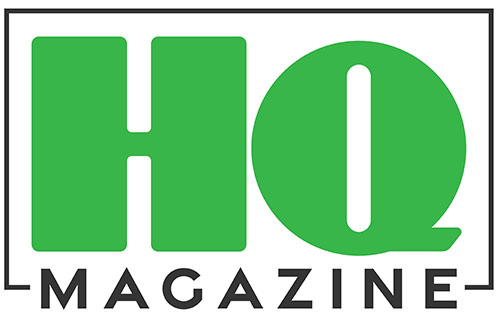How to Make the Most of the Year’s Biggest Spending Frenzy
Even before Black Friday became the biggest shopping day of the year, the weeks between Thanksgiving and Christmas have always been a pivotal time for retailers. After all, the day after Thanksgiving signals the start of the Christmas shopping season.
Eventually, retailers began offering special sales during this time. The goal was to turn enough of a profit to end the year in the black instead of in the red — hence the name “Black Friday.” Then, Cyber Monday became a way for online retailers to take advantage of the spending frenzy and drive traffic to their sites. Now, Black Friday is a weekend-long event that often begins Thanksgiving afternoon. Some retailers even offer an entire month of deals that begin earlier in November.
If anecdotal evidence isn’t enough, a quick review of key statistics makes it clear that Black Friday Cyber Monday (BFCM) is a huge opportunity for any retailer. The National Retail Federation reported that 179.8 million Americans shopped during the five-day period from Thanksgiving through Cyber Monday in 2021, and that number may very well rise this year. However, businesses must put in some work beforehand to ensure their BFCM sales events are a success.
Consumers come to Black Friday ready to shop, albeit with high expectations. Whether your business relies on brick-and-mortar stores, eCommerce sites, or a mix of both, this pre-BFCM checklist will help you make the most of the year’s biggest shopping holiday.
Define Success
The first step of any retailer holiday planning should be setting goals for Black Friday, Small Business Saturday, and Cyber Monday. What does success look like for your business?
When setting goals, remember to think SMART: specific, measurable, achievable, relevant, and time-bound. Let these goals guide your preparations, from advertising campaigns to employee training. What steps can you take to ensure that these goals are met?
SMART goals can help keep you focused before and during the holiday rush. When the dust settles, you will have a concrete, objective template for evaluating this year’s efforts and planning improvements for next year.
Plan Sales and Special Offers
If you want to maximize your profits, you need to plan out your sales and special offers well in advance. As early as possible, you should determine exactly which products you will highlight and what discounts you will offer.
A flat store-wide or site-wide discount may not be the best way to meet your goals. Consider spotlighting a few specific products with a holiday display, shopping guide, or seasonal bundles. You could use Black Friday to encourage existing customers to try newly launched products or attract new customers to your tried-and-true bestsellers. You could even design a few gift sets that will appeal to holiday shoppers and showcase your best products.
This weekend is also a great opportunity to incentivize purchases from any potential customers, who have been stuck in the consideration phase of your sales funnel. Your biggest sale of the year may be just what they need to finally make a purchase. You can further sweeten the deal with free shipping.
Make sure that your deals and discounts align with your business’s short-term and long-term goals. Otherwise, the time and resources you invest in Black Friday, Small Business Saturday, and Cyber Monday may be wasted.
Start a Countdown
Build anticipation by counting down the days until your BFCM event kicks off.
- Add a widget to your website. If your hosting platform does not offer a built-in countdown timer, you can use a widget from a third-party company like ElfSight, Powr, or Convertful. Some countdown timers are free. However, you may get more functionality from a widget that’s part of a paid plan.
- Post on social media daily. A well-run social media profile can help your business generate buzz around its products and sales events. Regular posts leading up to Black Friday will help you stay at the top for potential customers.
- Send reminders and sneak peaks. If you have a list of email or text subscribers, you can easily send customers a sneak peak of what your business has planned for the holiday weekend. If not, consider sending mailers to addresses in your area. You can also send reminders and updates about your store hours and promotions.
- Invest in window displays. Businesses with a storefront can design a window display to advertise their upcoming holiday sales. You could even incorporate a countdown element with a chalkboard, calendar, letter board.
As the day gets closer, you can start hinting at what customers can expect from your brand on Black Friday, Small Business Saturday, and Cyber Monday. A few days in advance, publish a holiday shopping guide that lays out all the deals and discounts you are offering. Then, once your sale starts, set a new countdown — this time to track the hours until your sale ends.
Investing in a premium widget will allow you to place a custom countdown timer on your BFCM landing pages. Some companies offer email countdown timers, too. Both can create a sense of urgency that encourages customers to make a purchase before time runs out.
Brick-and-mortar stores should advertise in their local paper, on radio stations, or in television ads. In addition to paid ads, you can pitch ideas to columnists, hosts, and journalists in your area related to holiday shopping. You can also work with other businesses to publish a holiday coupon book or gift guide.
Monitor Trends and Competitors
Check out your competition and consider how your deals stack up. Start by reviewing what competitors offered last year and how well it worked. Customer reviews and news articles can provide valuable insight.
Take some time to research consumer trends, too. Finding out where, when, and how your target audience shops will help you design a more compelling BFCM sale. Throughout this process, look for ways to stand out. Think about what makes your company unique and how that connects to current trends. Look for ways to connect with your community, too, both online and at local events. You may find the perfect opportunity to highlight on-trend products, build a special collection with a popular influencer, place your product in a holiday shopping guide, or tailor your website content.
Train Customer-Facing Employees
Many stores hire seasonal workers to help with the holiday rush. Whether or not you make new hires, it’s important to train any customer-facing employees for Black Friday.
Let employees know what they can expect based on past years and communicate your expectations. Cashiers, sales associates, and even greeters have a huge impact on the customer experience. So, provide training on how to interact with customers.
Spend time increasing your team’s product knowledge so that they are equipped to answer customer questions and provide assistance. Review your returns and refund policies with customer service representatives, and ensure everyone understands the terms of any discounts or deals you plan to offer.
Invest in Safety Measures
Both physical and online stores should take steps to ensure the safety of their customers. For a brick-and-mortar store, this might mean investing in extra security to help manage the crowds and ensuring that their surveillance cameras are up-to-date. Meanwhile, eCommerce sites should ensure that their DNS records and SSL certificates are up-to-date.
In the wake of a global pandemic, store cleanliness and hygiene matter more than ever to customers. Review your returns process and delivery systems, too. Advertise whatever measures you will take to ensure that customers will have a smooth, safe experience with your brand.
Optimize Your Website
Even if most of your sales are conducted in-person at brick-and-mortar stores, it’s important to optimize your website for the holiday weekend. Many customers prefer to shop online rather than in-store, while others do a bit of both. Retailers are wise to take advantage of eCommerce, whenever possible.
Start by checking your website’s capacity using a load-testing tool to make sure it can handle the increased traffic. The last thing you need is for your website to crash in the middle of the Cyber Monday rush.
Be sure to also test other aspects of your website. Many customers do their online shopping through mobile devices; so, test how your website performs on phones and tablets as well as laptops and desktop computers. Solicit feedback from customers or a focus group, if possible. You want to make sure your site is as user-friendly as possible.
Finally, consider building new landing pages for Black Friday, Small Business Saturday, and Cyber Monday. You can also work on updating product descriptions and images for the items your sale will focus on.
And Lastly… Check Your Inventory and Supply Chain
To ensure that you have enough inventory to meet demand, start stocking up on key products now. This is especially important now, as global supply chains struggle to recover after pandemic-related disruptions.
Customers shopping for Christmas gifts will be especially frustrated by backorders and delays. So, have a plan in place to ensure that online customers receive their orders on time.
If you know some items will be relatively scarce, consider adjusting your B2B or B2C sales plan to match your inventory. Alternatively, you can use supply issues to your advantage, using language like “while supplies last” or “limited stock” to convey a sense of urgency.
Gearing up for Black Friday, Small Business Saturday, and Cyber Monday may seem like a monumental task, but working through this checklist step by step will make it more manageable. With guidance from high-quality sources like HQ International, your business will be well-positioned to offer customers a seamless, safe, and satisfying experience this holiday season.












